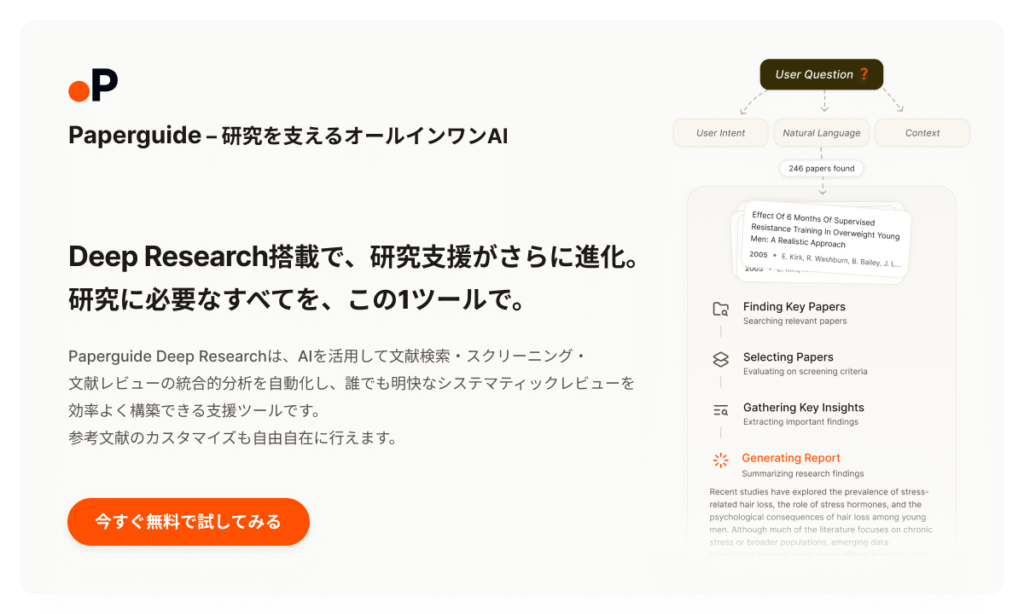Hiring is a serious problem when working in academia.
The issue originated with the enactment of the "indefinite conversion rule.
And the reason why it has become so problematic is the "employment patterns unique to the research community, which are often informal.
This article provides a summary of the researcher hiring problem and even background on the issue.
The point of this article
Researchers' hiring halt was triggered by the enactment of the "rule of indefinite employment termination".
The hiring freeze problem began in 2013 with the enactment of the indefinite termination rule.
- What is the indefinite conversion rule?A system that allows employees to convert to permanent employment if they work for a fixed term for five years or more.
(The revised Labor Contract Act of 2013 allows fixed-term employees to apply for stable, permanent employment if they have worked at the same job for more than five years.) - The researchers are.10 years by special exception
(A special exception is provided for researchers who can apply for a permanent transfer after a total of 10 years from the viewpoint of continuity of research.)
This allows researchers to convert to permanent employment if they have worked at the same institution for more than 10 years as a fixed-term, non-permanent employee.

If I am a fixed-term researcher, can I be converted to a permanent position after 10 years of service?
 Akanon
AkanonNo, that is not a situation to rejoice in.
Before the time when the employment can be converted from fixed-term to permanent,Each university hires in large numbers to avoid indefinite turnover.A series of cases occurred.
The employer does not renew the contract at the expiration of the fixed-term employment contract.
It is a completely different meaning from dismissal, as employment automatically ends when a contract with a fixed term is terminated.
It is not illegal.
Key points for understanding the issue of hiring and firing researchers
We will focus on two key issues to help you understand the employment termination issue.
- In AcademiaMany fixed-term postsさ
- Repeated contract renewals for fixed-term positions, often for long periods of time at the same institution.
- On hiring fixed-term researchers,Move to establish a cap on the number of years of employment
At RIKEN (commonly known as RIKEN), the country's leading public research institute, the labor union (RIKEN Labor) actively campaigned to stop this hiring freeze.
Point 1: Many fixed-term posts in academia
The number of fixed-term positions in academia is increasing each year.
In addition, they often work at the same institution for long periods of time through repeated contract renewals for fixed-term positions.
As of 2022, RIKEN currently hasAbout 80% of the employees are non-regular workersIt was.
That's quite a surprising number for a leading national research institution...isn't it?
# RIKEN What is RIKEN?
- RIKEN Labor Union (@riken_union) March 25, 2022
∗National research and development corporation for all aspects of science and technology under the jurisdiction of the Ministry of Education, Culture, Sports, Science and Technology
∗Headquartered in Wako, Saitama, Japan, the company has many offices and operations in Japan and abroad.
∗ Direct employment of about 4,800 employees.# Hired out # Hiring pic.twitter.com/vfbVRvDByX
Even researchers who have many subordinates (researchers, post-doctoral fellows, and students) as principal investigators (PIs) are sometimes tenured.
Other institutes do not differ greatly in their reality.
Thus, in academiaThere are a very large number of non-tenured, non-permanent employees in research positions.
Point 2: Repeated contract renewals for fixed-term posts often lead to long-term employment at the same institution.
Although there are many tenured researchers, they do not necessarily move from one position to another within a short period of time.
Hmm? What do you mean?
In fact,Often working long-term at the same institution by renewing a contract for a fixed-term post.The majority of the institutes had renewable contracts for more than 10 years.
Let's look at some specifics.
To begin with, how long a term of office is attached, relatively often less than one to six years.
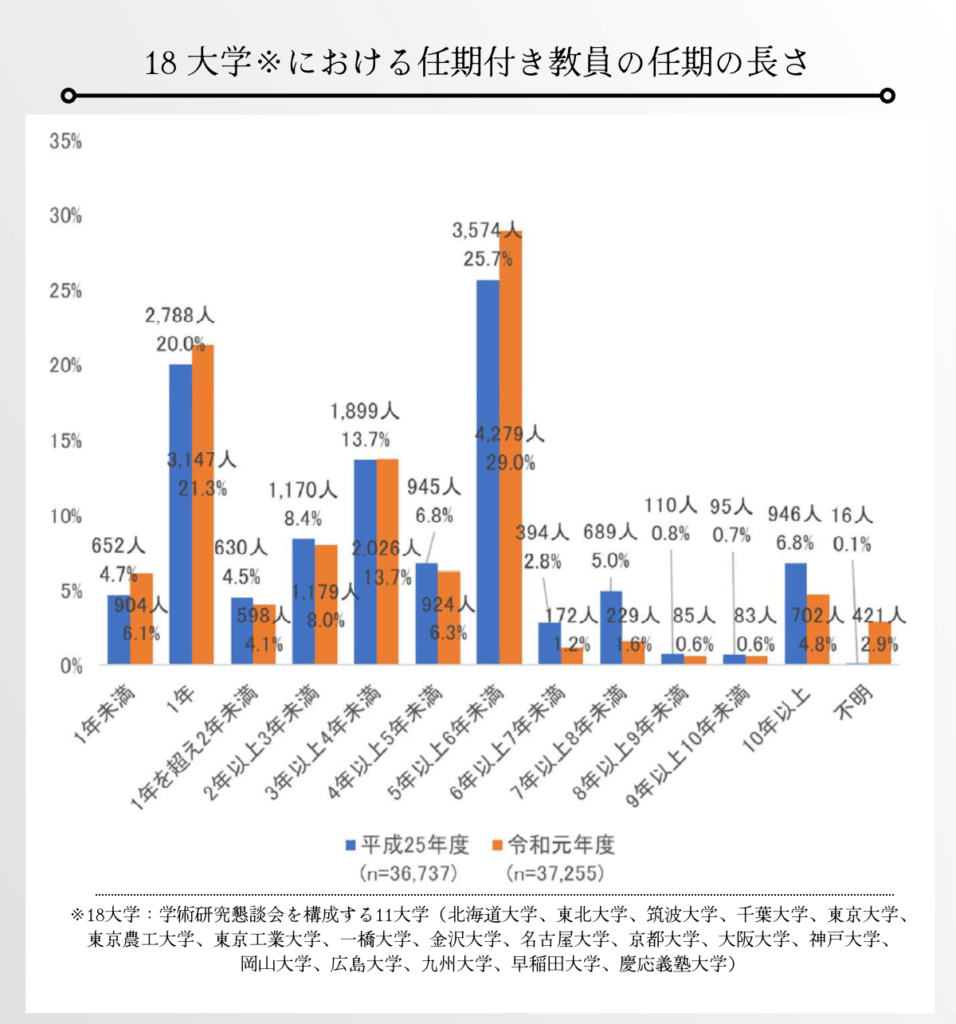
However, their terms of office can be renewed through examination and other processes.
As shown in the figure below, as of 2021, approximately 40% of the contracts have a maximum possible term of 10 years or longer.

There are many people at RIKEN who have continued their research for 10 or 20 years with repeatedly renewed contracts.

So far, you've had an environment where you've been able to work for a long time, even if it's a fixed-term post.
 Akanon
AkanonYes, that is about to change...
Point 3: In hiring fixed-term researchers,Move to establish a cap on the number of years of employment
Before hiring a researcher for a fixed-term position, you should beforehandYou can only work for a maximum of 10 years."The move was seen as a way to put a condition on the
Moreover, cases of retroactive application have been approved, even for researchers who have already been hired.
- After the enactment of the rule for permanent employment conversion, there is a movement (at some institutions and universities) to set the maximum number of years of employment at 10 years or less in advance in employment regulations, etc., so that conversion to permanent employment is not possible.
- In some cases, the employment ceiling starting date is applied retroactively to 2013, the year when the indefinite employment rule was enacted.
RIKEN has also made the following changes to its work rules in response to the enactment of the "indefinite work term rule.
・No contract will exceed 5 years" (5-year employment cap) for clerical positions.
Excerpt from "Online Roundtable on Massive Hiring Cuts at National Universities and Research Institutes
・Research-based "no contract exceeding 10 years" (10-year employment cap)
The employment ceiling isIntentionally avoiding indefinite conversionIt is a thing.
Even in the middle of a large research project in progress, once the maximum number of years is reached, the project will be terminated midway.
Such changes in employment limits are not limited to RIKEN, but also to numerous universities.
Specific examples of researchers who are subject to termination of employment
The following are two typical examples of fixed-term posts that are subject to the hiring freeze.
 Akanon
AkanonBoth are dominated by young researchers.
- Postdoctoral Fellow (Postdoctoral Fellow)
- Tenured university faculty
Specific example (1): Postdoctoral researcher (postdoctoral fellow)
These days, even tenured university faculty are hard to come by due to the shortage of academic posts for Ph.
Postdoctoral fellows are employed on a fixed term basis as part of a laboratory's individual research fund (e.g., Grant-in-Aid for Scientific Research) or a certain project, and the insecure nature of their treatment (e.g., financial, job security, etc.) makes this a problem.
It can be said that this is the first position to be targeted in this hiring freeze.
even now1.5 million or moreIt is believed that there are
Click on the image to enlarge/.
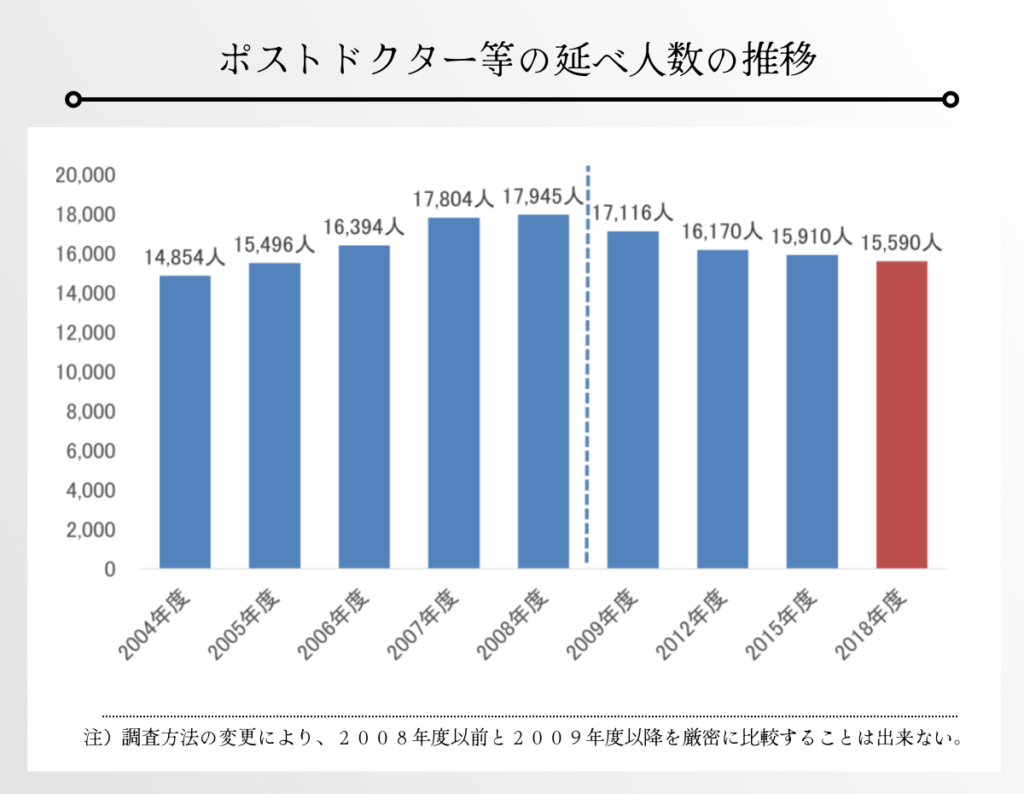
Most of these postdoctoral fellows are young researchers under 40 years old.
Click on the image to enlarge/.
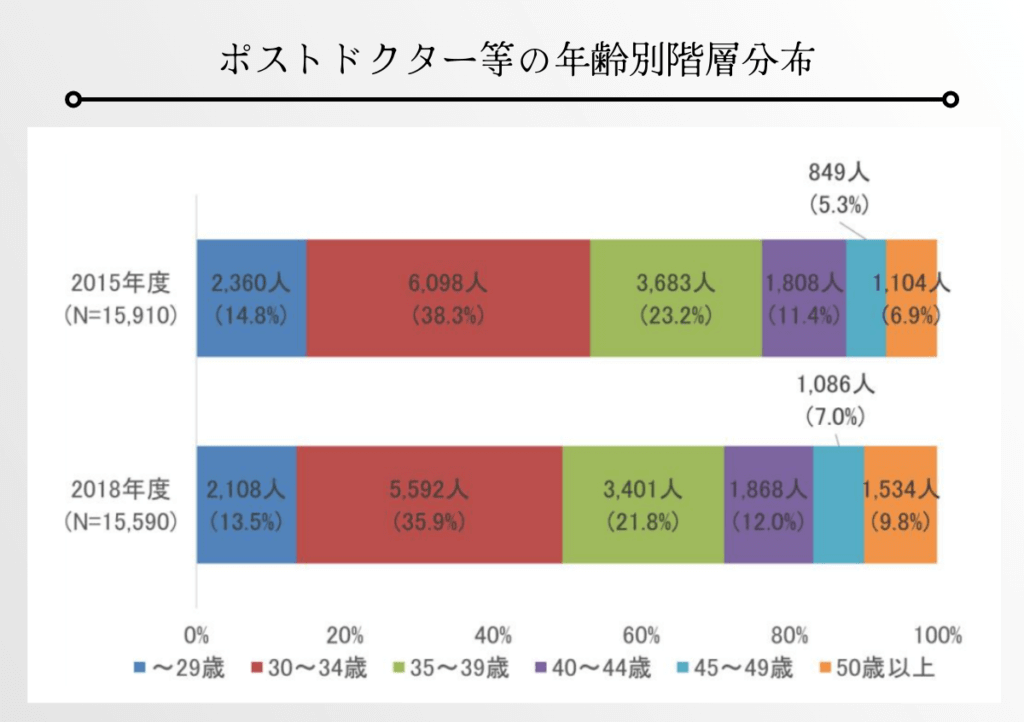
If you would like to learn more about postdoctoral fellowships, please refer to the following articles.
■Reasons for the increase in post-doctoral students
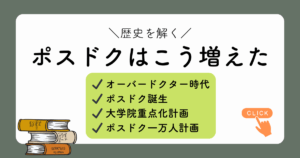
■ postdoctoral problem(Employment status and salary)
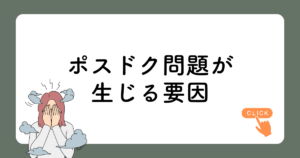
Specific example 2: Tenured university faculty

I could have been a university faculty member and I'm still eligible to be hired?
 Akanon
AkanonYes, I am. Even university faculty members are eligible for tenure, of course!
The percentage of fixed-term positions among university employees has increased over the last 20 years or so and is now about 40%.
Click on the image to enlarge/.
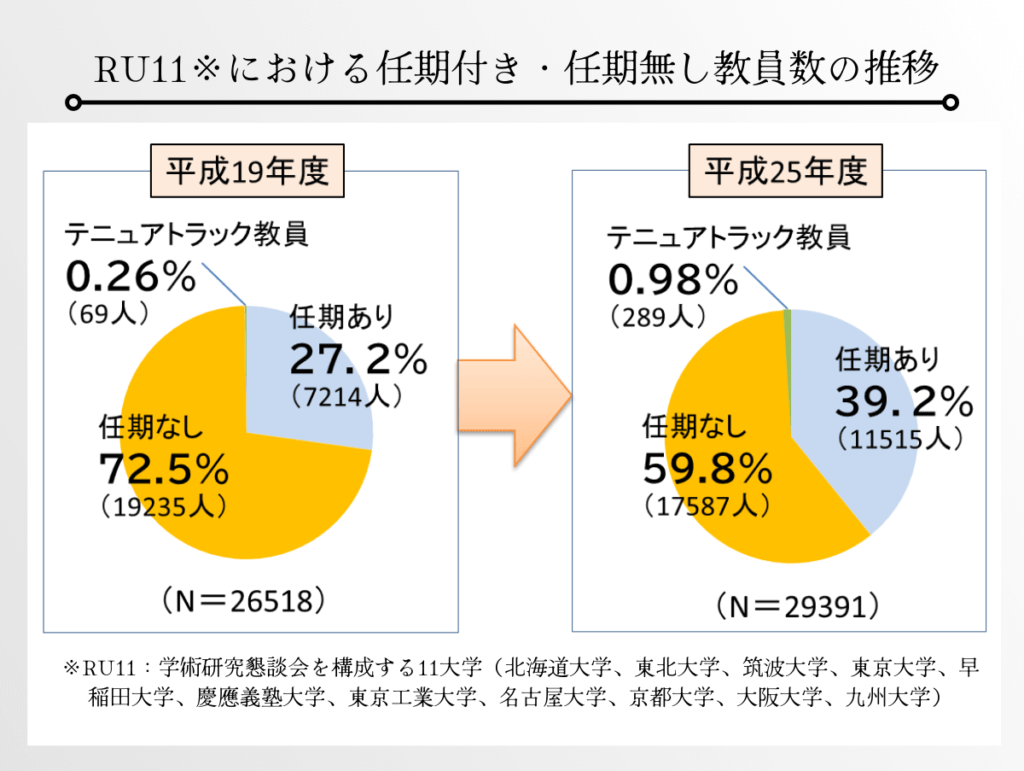
The groups that are increasing in tenured positions are the younger "30-40 year olds" and "Assistant Professors and Specially Appointed Assistant Professors".
Click on the image to enlarge/.

The number of tenured positions in university teaching began to increase with the passage of a law in 1997 that allowed for tenure for university faculty.
To increase the mobility of university faculty and to revitalize education and research at the university,(Appointment of University Teachers, etc., with Term of Office)。
Act on Term of Office of University Teachers, etc." (Act No. 82 of 1997)
 Akanon
AkanonObjective,To "enhance the mobility of the faculty, thereby revitalizing education and research."
In other words, the movement is to stimulate research activities by endorsing competition, which is also a natural trend.
This is a measure to prevent the creation of researchers who are "lazily employed for life without doing any good research."
In addition, nowadays,

Insufficient funds for basic university operations and no budget to hire indefinitely

The employment ratio of young researchers needs to be increased according to the government's policy of supporting young researchers.
The Ministry of Education, Culture, Sports, Science and Technology (MEXT) has informed us that the ratio of young people should be increased, and as a set, expenses for stable employment of young people should be paid out every year.
- Kushimitama (@Beethovener) June 9, 2022
The painful reality is that even the best researchers cannot easily be employed indefinitely, and the only way to increase the number of young researchers is to increase the number of young researchers with tenure.
Social losses due to employment instability of researchers
In the first place, the rule of indefinite conversion,Long-time fixed-term workers should convert to permanent employment to stabilize their employment.This was the purpose of the project.
Ministry of Education, Culture, Sports, Science and Technology websitealso clearly states that "it is not desirable, in light of the purpose of the Labor Contract Law, to terminate employment before the right to apply for a permanent change of employment arises.
However, quite contrary to its intent,Assumption of termination of employment.The employment status of the
The precariousness of employment of these researchers ensuresDecline in Japan's Research CapabilityThis is a factor that creates
- Hard to work on long-term research
- Outflow and turnover of researchers abroad
- Decline in attractiveness of researchers
➡Fewer young people want to become researchers.
Social loss 1: Hard to work on long-term research
Many researchers who have achieved outstanding research results have done the research that is the basis for their achievements at a young age.
The following chart shows the ages of the researchers at the time of the achievements that led to the Nobel Prize.
Click on the image to enlarge/.
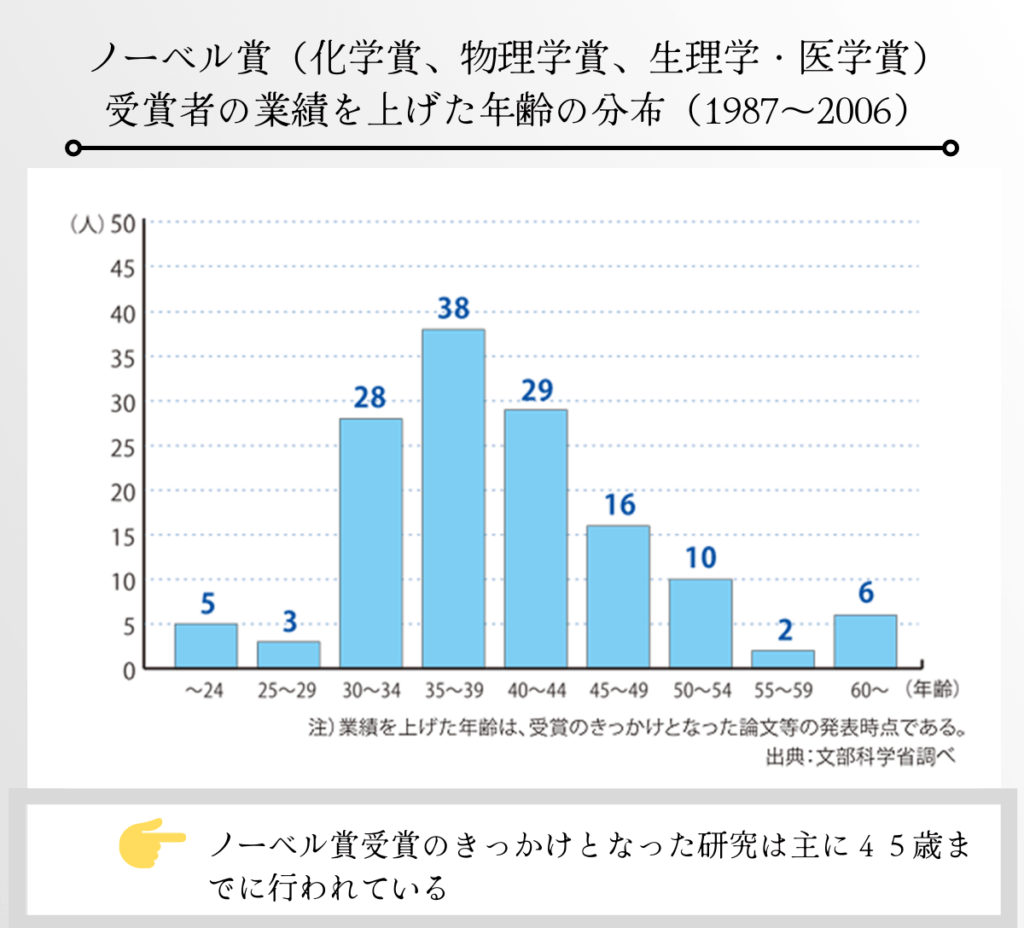
However, it is the young to mid-career researchers, often in fixed-term positions, who are the targets of the hiring freeze.
Research that is more likely to yield results in the short term is inevitably given higher priority, given the need for performance to qualify for the next post.
It is an environment where it is difficult to embark on grand studies with a long-term perspective.
Social loss #2: Outflow of researchers overseas and turnover of researchers
Researchers who have been targeted for hiring will have no choice but to look for their next post.
Unfortunately, however, even researchers with outstanding achievements have difficulty finding positions in Japan.
 Akanon
AkanonIf they cannot find a teaching post, they have to work as post-doctoral fellows at a thin salary.
These researchers are faced with the decision of finding a position abroad or quitting the profession.
It is inevitable that the research population in Japan will decline.
Social loss 3: Decrease in attractiveness of researchers
There is a fear that the image of the "unfortunate researcher" will take hold and fewer young people will want to become researchers.
In fact, some say that the best young people in the sciences are concentrating on medical school.
A decrease in the number of young people aspiring to research will lead to a decline in research and, in turn, a decline in national strength.
This precariousness of employment of researchers, including the issue of hiring and termination of employment, is a serious problem that causes a decline in Japan's research capabilities.
summary
This section summarizes the issue of hiring and firing researchers.
My impression is that the indefinite transfer rule has brought to light a deep-seated problem regarding the employment status of researchers.
The challenge for the future is how to reconcile the balance between ensuring the mobility of researchers and the stability of employment.
 Akanon
AkanonThank you for reading to the end.
Article updates are also posted on X and Instagram.
Please follow us and check it out!
- click here
- Click here for the installation.
- Click here for YouTube (in preparation)
- Click here for NOTE

request
Thank you for taking the time to read this article.
This is a personal site that the operator updates little by little in between his personal life.
If you found the content of this site helpful,
We would be happy to receive feedback on social networking sites.
The feedback we receive will encourage us to create future articles.

